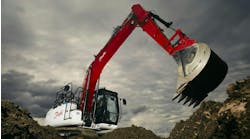I was called in on a desperate situation at a lumber mill. Being a few miles from the mill, I told them I would be over in just a few minutes. A large crane used for unloading semi trailers was down, and logging trucks were backing up. On my arrival, after driving past a long line of trucks, I arrived at the crane.
This crane swiveled on a circular set of tracks and could rotate to unload trucks and place logs around the crane in a large circle. Several people were standing there watching the crane go around and around at full travel speed, with the grapple hook dragging across the tops of the log piles.
They explained that the crew had just installed a new electrical panel at the base of the crane and had changed some of the plumbing on the controls. The only problem was they had incorrectly plumbed some of the hydraulic controls, which caused the crane to go full throttle in one direction as soon as they started it. When this happened, the operators went running away from the crane. Nobody wanted to go near the power disconnect which, was mounted on the crane.
After the electricians tracked down the power lines inside the plant and disconnected them, we found a control line was crossed, which caused the problem. A new emergency stop circuit was installed outside of the crane area the next time I visited the mill.
|
Lesson learned: |
Lessons Learned are contributed by Cleveland-based Applied Industrial Technologies’ Fluid Power Specialists. Tom Nash is Applied’s Product Manager - Fluid Power Products. He has 20 years of technical, sales and managerial experience in the fluid power industry. Contact him at (216) 426-4257, [email protected], or visit www.applied.com.


